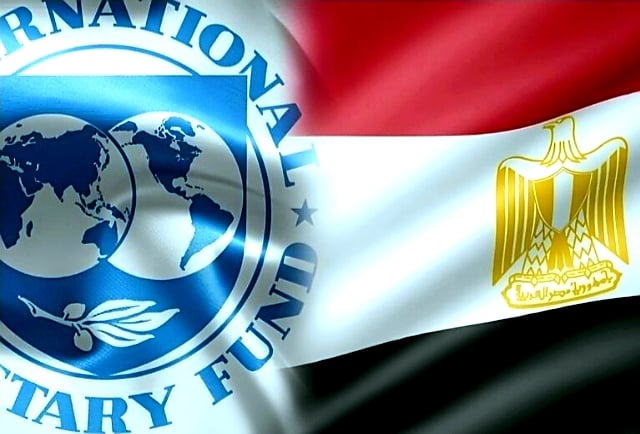Egypt, a nation that stands as a beacon of African economic potential, is paradoxically tethered to the lifeline of International Monetary Fund (IMF) loans. The recent March 2024 sanctioning of an additional $5 billion loan is a testament to this dichotomy, with the new agreement being a further expansion on the $3 billion, 46-month Extended Fund Facility (EFF) that the IMF struck with Egypt in December 2022.
The north African country is the continent's acrobat at the moment balancing navigating its economic growth amidst IMF's structural adjustments.
But what does this recurrent financial aid spell for the land of the Pharaohs?
The annals of Egypt's economic journey are replete with IMF engagements, each promising a panacea of reforms. Yet, the nation's economy recurrently beckons for the Fund's intervention, seeking financial respite to navigate through its fiscal labyrinth. Something that is paradoxically both desirable and undesirable at the same time.
As we stand in 2024, Egypt's Gross Domestic Product (GDP) hovers around $368 billion, the third largest in Africa, but however with a measly tax-to-GDP ratio of 13.5%. No need to imagine this nation's potential were it to improve efficiency by reorganising its tax base and improving collections, considering the largest economy in Africa is just 3% larger than Egypt's.
The country's inflation, once a soaring eagle, has now descended tentatively. As for this nation's external debt servicing, a voracious consumer of nearly 8% of its GDP, coupled with foreign reserves strained to cover $29.2 billion in external debt repayments, all paint a picture of fiscal fragility. One of the reasons why the Fund is happy to keep the money conveyer belt running in Egypt's direction.
The open cheque book is as if the Fund is saying, what you fail to collect internally we will provide externally, via debt. This recent bolstering of Egypt's EFF by $5 billion is a "strategic move to instigate economic stabilisation." Or so we are told.
But, from a quantitative perspective, the IMF's loans can be seen as an injection of liquidity that temporarily eases financial constraints. However, economic theory suggests that for long-term stability, Egypt "must" focus more on enhancing productivity, diversifying its economy, and improving the business environment to attract investment than it is doing soothing immediate pains by borrowing from its future through so much debts.
Its reliance on IMF loans is not merely a reflection of immediate fiscal needs but also an indicator of deeper structural challenges. The nation's debt-to-GDP ratio, which currently stands at approximately 90%, is a stark reminder of the persistent budget deficits and the cost of servicing existing debt. The recent downgrade by Moody's points to concerns over debt affordability and the potential risks of capital outflow and exchange rate volatility.
The structural recommendations coming with this debt include a liberalised foreign exchange system and a fiscal policy tightening, with an undercurrent aim to level the economic playing field for private sector growth. Hopefully which will curate the very informal economy into a more taxable one and then, by extension, this will improve revenue collection. All very promising, on paper.
A quantitative dissection reveals the IMF's intervention as a multifaceted gambit. It offers immediate fiscal relief yet burdens the future with debt. The bond market's response has been a cautious optimism, with Egyptian government bonds rallying by 29% in anticipation of the loan.
The FY 2023/24 budget allocation is a window into the government's economic soul. A significant portion is funneled towards subsidies, healthcare, and education, while a staggering EGP 1.120 trillion is reserved for debt interest. This allocation pattern underscores a commitment to social welfare and an acute cognisance of the looming debt specter.
A closer examination of this FY 2023/24 budget reveals a government attempting to walk a tightrope between economic growth and fiscal consolidation. The substantial allocation for debt interest payments indicates a heavy burden of debt servicing, while investments in healthcare and education also reflect a commitment to human capital development. However, the question remains: Are these allocations sufficient to stimulate sustainable growth?
The post-adjustment economic trajectory of Egypt is contingent upon the successful enactment of reforms. The projected GDP growth rate of 3.2% for FY 2023/24 is a modest forecast, with hopes pinned on the global economic climate and domestic policy efficacy.
As a few scholars in the realm of macroeconomics have already postulated, they perceive the IMF's structural adjustments as a necessary step, albeit not a panacea. Egypt's sustainable growth is anchored in its ability to leverage its strategic geographic position and a burgeoning youthful workforce to bolster fundamental economic indicators, as long as it organises its revenue collection efficiencies instead of over reliance on debt.
The gap between Egypt's internal resources and its developmental needs is widening. Despite a large, young workforce and a strategic geographic location, the country has struggled to translate these advantages into robust economic growth. The IMF loans are thus seen as a lifeline, providing not only financial resources but also a framework for structural reforms.
The IMF's latest financial infusion into Egypt is another chapter in the nation's enduring saga of economic reform. Will this round of structural adjustments be the harbinger of lasting change, or merely a deferment of an inevitable economic reckoning? The answer lies in the unwavering commitment to reform and the strategic utilisation of national advantages.
The journey ahead for Egypt is one of cautious optimism and the IMF’s structural adjustments, if accompanied by robust policy implementation and a commitment to reform, can indeed set the stage for a thriving economy. It is a path fraught with challenges, but also filled with potential. If only they are using these debts as a crutch to lean on while they reciver the economic base to later stand on it's own.
As Egypt writes its next chapter, it has the opportunity to redefine its economic destiny and emerge as a model of resilience and growth in the ccontinent.
Mean time mythical Egypt continues to grow, and in 5 more years, I project it will be the biggest economy in Africa - if all else remain on the same trajectory.


